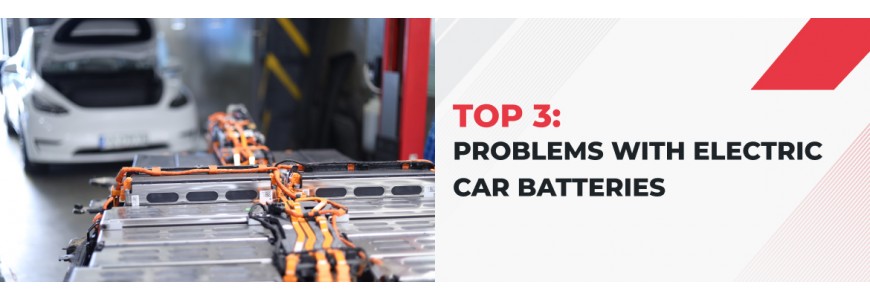
The high-voltage battery is one of the most critical and expensive components of an electric vehicle. Its condition affects the vehicle's key characteristics and even its ability to operate at all. Manufacturers make significant efforts to protect the battery from external and internal factors, but owners still face problems, making battery repair and restoration services increasingly popular as the number of electric vehicles and hybrids grows.
STRUCTURE OF ELECTRIC VEHICLE BATTERIES
Electric vehicle batteries consist of small cells with a voltage of 1.2 or 3.7 V, depending on the type. Since the required output power is several tens of kilowatts and the voltage can be up to 800 V, many power sources are needed. These are grouped into modules (cells), typically from 4 to 12 in each. Both the standard Battery Management System (BMS) and equipment for restoring nickel-based batteries work with these modules, while in lithium batteries, they work with individual cells.
Different types of batteries are used in vehicles, with two being the most common:
1. Nickel-metal hydride (Ni-MH).
2. Lithium-ion (Li-ion).
The first type is considered outdated and was primarily used in hybrids. However, even in these vehicles today (for example, the Toyota Prius Prime hybrid), lithium batteries are used. Each type has its pros and cons. Nickel-metal hydride batteries are less efficient, almost unusable below 20% charge, and difficult to charge above 80%. They are also more prone to self-discharge. However, Ni-MH batteries are relatively safe—they can explode but won’t ignite.
Li-ion batteries significantly outperform Ni-MH in parameters. They last longer, have almost no self-discharge, and no memory effect (meaning they can be charged from any point). Lithium batteries also have higher energy density. The major downside is lithium’s extreme flammability, which makes it challenging to extinguish in case of fire. However, lithium is now managed with BMS (Battery Management System), a system equipped in all electric vehicles using this type of battery.
While the characteristics of the two battery types differ, the main issues they face are generally the same.
MAIN BATTERY PROBLEMS
Battery degradation is an inevitable process due to the laws of physics. Even with proper use, electric vehicle batteries degrade at an average rate of about 2% of capacity per year. Since a battery is considered unusable after losing approximately 30% of its capacity, this typically ensures 10-15 years of use. However, certain factors can significantly accelerate degradation.
Overheating
The danger of high-voltage battery overheating is not just the risk of fire or explosion—this is quite rare. Excessive temperature is also a stress factor for batteries, leading to premature capacity loss. In addition to general overheating, there is also localized overheating when more charged cells in an unbalanced battery are subjected to higher loads, causing the voltage to drop.
Balancing is necessary, but the vehicle's BMS can only balance the cells when they are in very good condition with minor differences between modules. In Ni-MH batteries, a variance of up to 1.5 V is allowed, while in lithium batteries, the maximum is 50 mV. Often, the BMS cannot keep up with balancing the battery.
Nickel batteries are more tolerant of overheating; for balanced operation, it is enough to charge them to 100%. However, the standard electronics will shut off at 80% for safety reasons. Special technology is needed for this—trickle charging, which is a form of hybrid battery restoration, and can only be done with specialized equipment.
Physical Damage
Electric vehicle batteries are often located under the car’s floor. This improves weight distribution and handling but increases the risk of damage. Situations where the battery could be damaged include:
● Car accidents.
● Hitting obstacles.
● Damage from forklifts during transport, especially by sea (relevant for cars from the USA).
It is dangerous to operate a vehicle with a damaged battery. A mandatory check using a lithium or Ni-MH battery tester is necessary.
In hybrid vehicles, batteries are often placed under the rear seat, so air intakes are installed in the cabin. Moisture, such as condensation or melted snow, can enter the battery through these intakes, leading to contact corrosion and battery imbalance. Moisture inside the battery is a very serious problem, requiring a Li-Ion tester for proper diagnosis.
Chemical Issues with Batteries
Electric vehicles and their batteries vary in quality. For example, Tesla batteries rarely fail, while Chinese batteries often leave much to be desired. This manifests in some modules becoming less capable of accepting a charge after about six months, leading to imbalance and battery failure. Identifying which modules are problematic and conducting timely balancing requires a Li-Ion capacity tester.
HOW TO ADDRESS BATTERY ISSUES
High-voltage batteries do not fail entirely and instantly. Typically, problems begin in individual modules, which the vehicle's electronics cannot handle on their own. If these issues are not addressed, local problems can escalate into major ones, forcing the owner to seek ways to restore a hybrid battery or replace electric vehicle battery cells.
To monitor battery condition, diagnose, and repair at all stages, including:
● Determining capacity;
● Preparing the battery for installation in the vehicle;
● Preparing for storage,
We have developed the MS800 diagnostic tester, a unique device that allows you to address many problems with Ni-MH and Li-ion batteries, preventing their improper operation and premature failure.



COMMENTS